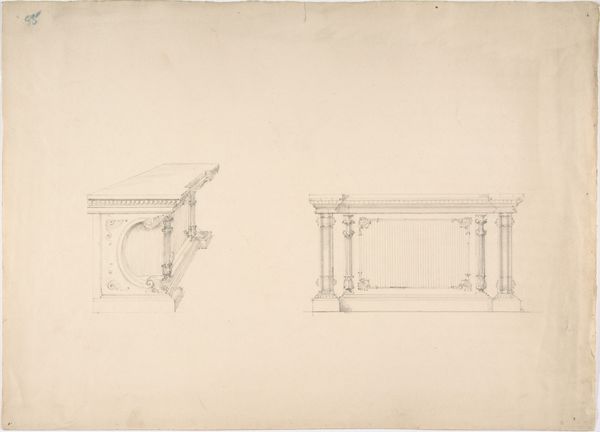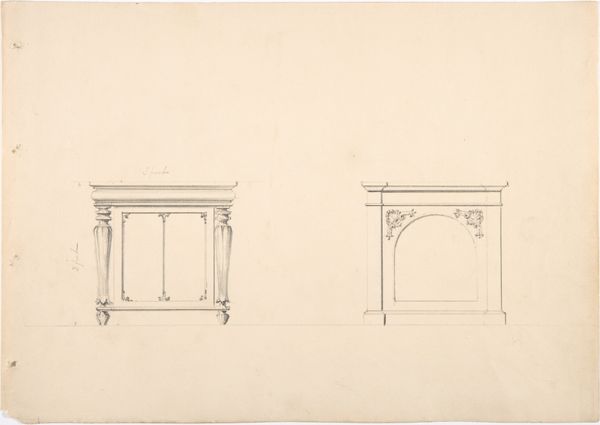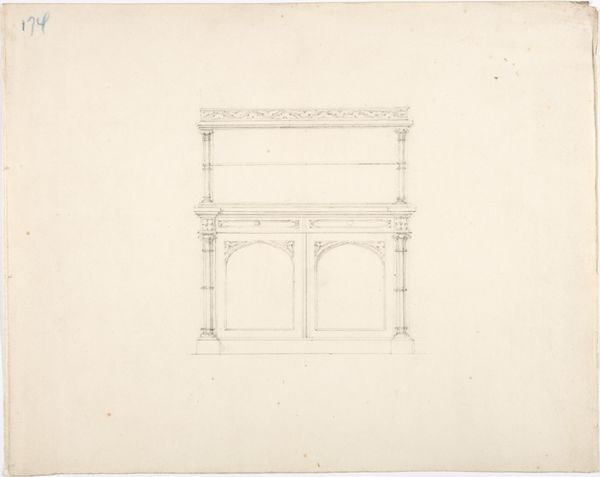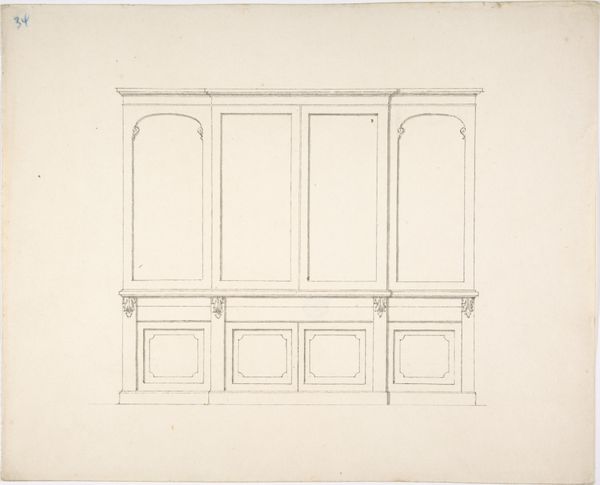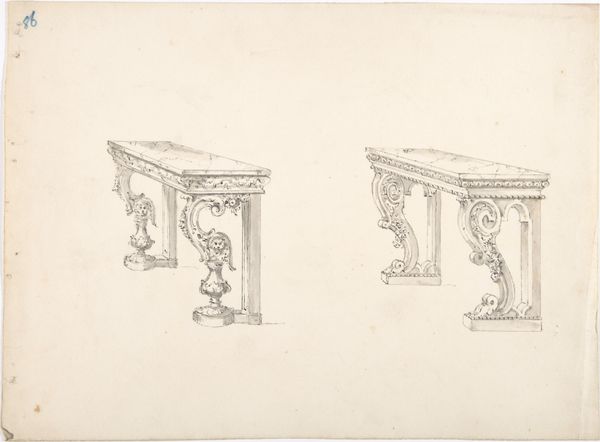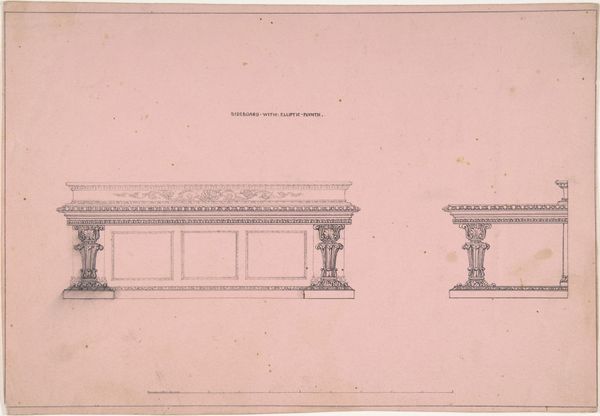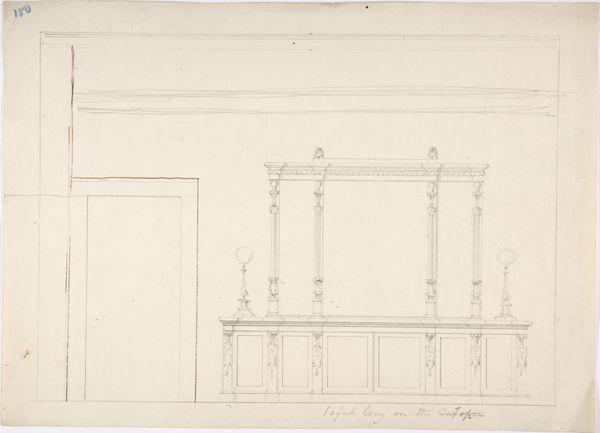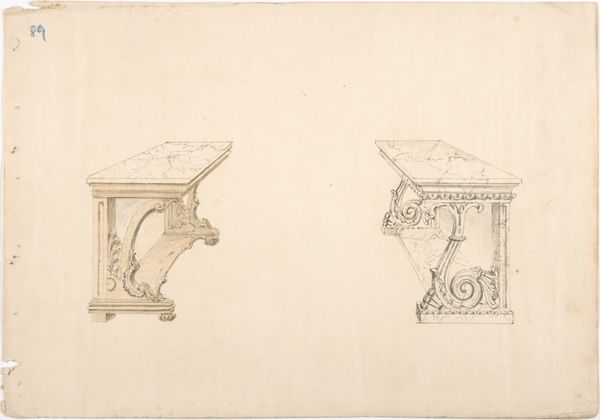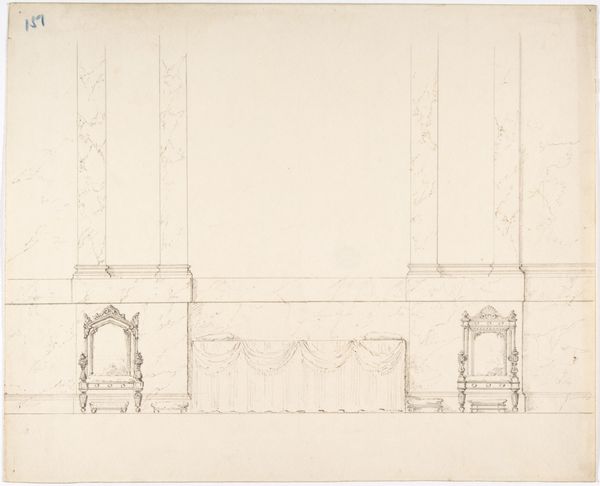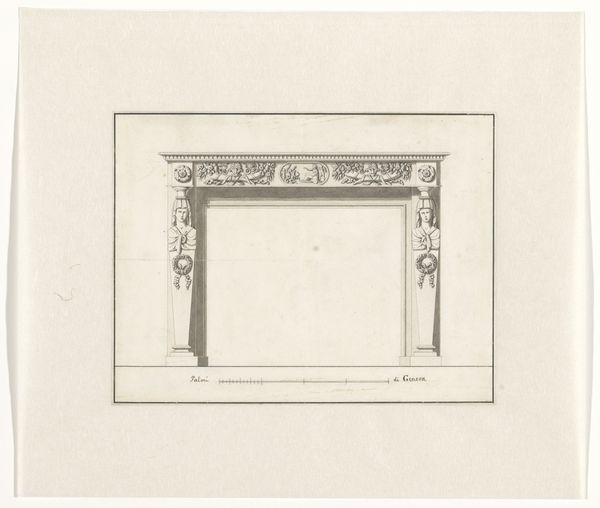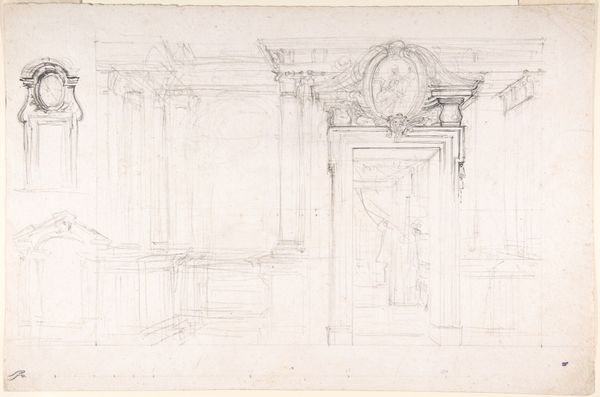
Dimensions: sheet: 8 9/16 x 12 3/16 in. (21.7 x 31 cm)
Copyright: Public Domain
Editor: Here we have "Design for Two Gothic Desks" made between 1800 and 1850, attributed to an anonymous artist, created using pencil, etching, and print. The precise lines make me think these designs were for mass production. How do you see this drawing functioning in its time? Curator: This work opens a fascinating window into 19th-century manufacturing and the Gothic Revival. The drawing itself is a document of design labor. We can see the potential for the division of labor – specialized artisans producing decorative elements to be assembled. This challenges romantic notions of the lone artist-craftsman. Editor: That’s interesting. So, you are saying this wasn't just about aesthetic, but a detailed plan for how these desks could be made on a larger scale? Curator: Exactly. Look closely at the different materials implied – the type of wood, potential for metal fittings. Consider how each element was sourced, shaped, and potentially combined using then-current industrial techniques. Where were these materials coming from, and who was doing the physical labor to transform them? The elegance of the “Gothic” belies complex systems of production and distribution. Editor: It’s amazing to think about all the unseen labour embedded in a simple desk! I've never considered the source of materials informing art choices. Curator: Seeing art through a material lens brings awareness of both production and consumption. It prompts us to look beyond surface appearances. Editor: This perspective shift changes everything I thought I knew! Curator: It's a continuous exploration of processes behind the product!
Comments
No comments
Be the first to comment and join the conversation on the ultimate creative platform.

